Product Team Alignment: Part 2

In my previous post, we explored stakeholder alignment and how alignment facilitates openness and clear communication, enhancing transparency and customer value creation. This, in turn, helps everyone involved to understand and embrace a shared vision, fostering a unified approach to achieving objectives.
I have been ‘inspired’ by Marty Cagan’s new book Transformed and recently read an article by Pawel Huryn where he discusses product model first principles around creating an empowered cross-functional product team. In this article, I explore key principles impacting customer & stakeholder alignment.
The VALUE framework ensures a holistic approach to alignment, incorporating various aspects critical to success, all underpinned by a data-driven, outcome-oriented culture. See what David Pereira had to say about cultivating a value-driven mindset and 5 traps blocking teams from delivering value.
We can avoid these pitfalls when aligning with your team, and using the VALUE framework as a guide and principles to ensure you continue to add value to your customer.
V – Vision
- Define the Vision: Start with a clear, compelling product vision that aligns with customer needs and the company’s strategy. This vision should articulate where the team or product is heading and why it matters.
- Set Goals & Objectives: Using the OKR framework, objectives should bridge the vision with aspirational objectives and achievable outcomes (key results), focusing on both the customer needs and strategic priorities of the company. I use OKR’s to ensure focus in the team over a specified period, and a measurable talking point during regular check-ins.
A – Align and Articulate
- Align Strategies: Ensure that the product strategy aligns with the overall company strategy, focusing on how the product can support and enhance the company’s goals.
- Articulate the Strategy: Clearly articulate how the product strategy will meet customer needs, drive business outcomes, and support the company’s strategy. This includes defining the value proposition and differentiators. See Integrating Product Strategy for Deeper Alignment
L – Leverage and Learn
- Leverage Customer Insights: Use customer feedback and data analytics to inform product development and improvements. This ensures the product continues to meet evolving customer needs and preferences.
- Learn from OKRs: Regularly review OKRs to learn what is working and what isn’t. This involves assessing progress towards objectives, evaluating key results, and adapting strategies as needed to stay on track.
U – Unify and Understand
- Unify the Team: Foster a culture of collaboration and transparency, ensuring everyone understands how their work contributes to the objectives and the broader vision. An example here, Jackie Flake posted a way to get new PM’s up to speed by referencing David Pereira’s article on the Lean Canvas.
- Understand: Cultivate a deep understanding of both internal and external customers by empathizing with their experiences and needs, which guides the development of products and services that genuinely resonate and provide value.
E – Evaluate and Execute
- Evaluate Outcomes: Regularly assess how well the product and strategies are creating value for the business and customer. Use insights gained from evaluating business outcomes and OKR performance to refine and enhance strategies, ensuring continuous alignment with customer needs, company goals, and market opportunities.
- Execute with Agility: Implement agile methodologies to execute on the product strategy, allowing for rapid iteration and responsiveness to customer feedback and market changes.
As a Product manager, you can utilise the VALUE framework as a guide, and achieve alignment through product strategy to ensure you continue to add value for your customer.
*This post has used a combination of my thoughts, fears, links, research, AI, experiences and ideas.
